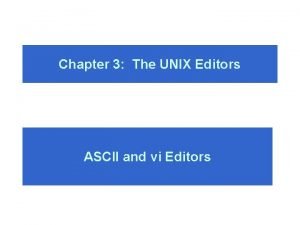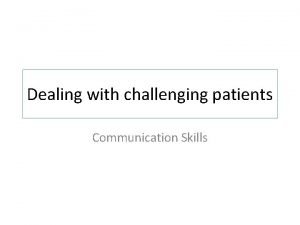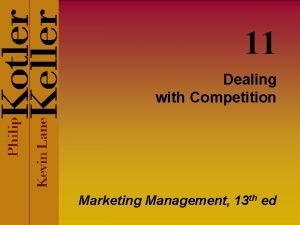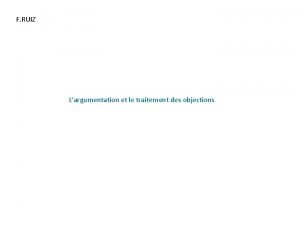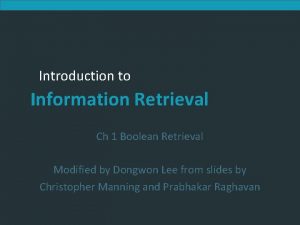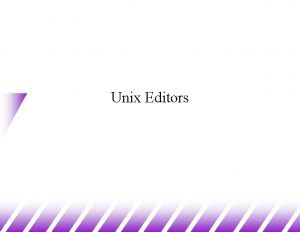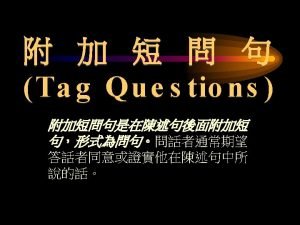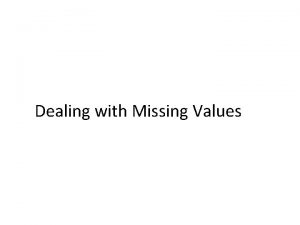Dealing with editors Peter Philimore Dealing with Editors










- Slides: 10

Dealing with editors Peter Philimore

Dealing with Editors • Authorship • Selecting an appropriate journal • Cover letter to Editor • Plagiarism • Revising: responding to referees’ criticisms • Your second letter to the Editor • Copy Editor and Proofs

Authorship • Deciding on who counts as author • Criteria for inclusion • Authorship order • Who will lead? • Division of labour • Setting timetable • Your responsibilities as lead author

Selecting the right journal There are many choices, so… • Make a list of possibilities, the pro and cons, and an order • Try x first (why? ); try Y second (why? ) • Which audiences are you trying to reach? • Do you want to aim high or get your paper published rapidly? • Might you want to reach audiences in several fields? • The pros and cons of interdisciplinary journals • http: //www. standrews. ac. uk/intrel/css/publications/thestandrewspapersoncontemporarysyria/ • How important is the Impact factor? • Does Impact factor always reflect journal status?

Cover letter to the Editor • This letter may be crucial! • Make the editor WANT this paper! • Try to ensure that the Editor doesn’t read and reject without even sending to reviewers • Show that you know this journal • Explain how your article is (a) appropriate in this journal and (b) offers something new • But don’t overstate claims you make! • Address the editor by name

Avoiding any suspicion of plagiarism • Rarely a problem but… • Always be scrupulous in your referencing – regarding both data and argument • Always insure you are using your own words and style

Revising 1: responding to referees’ criticisms Likely responses • • Accepted but asking for minor changes Potential acceptance after more changes Revise and resubmit (no guarantees) Reject • Rejection without reviewers’ comments gives you no guidance BUT • Rejection with reviewers comments may be very useful

Revising 2: responding to referees’ criticisms • If 2 -4 reviewers, then order their comments: • Sort major from less significant • Helpful: the comments which help you develop your analysis • Tricky 1: the comments which highlight your lack of data • Tricky 2: the comments which require space you don’t have • Wrong: the comments which misunderstand your article • Identify further reading or analysis you need to do • Set a timetable and involve your co-authors • Division of labour • Remember to check that the revisions are reflected in the Abstract

Your second letter to the Editor • This letter is even more important than the first • You have to convince the editor you have taken reviewers criticisms seriously • This does not mean you have to agree with every criticism • But you must not give the impression you have been selective! • What to do if reviewers ask for contradictory things? • Seeking clarification from the editor • Your letter makes the overall case defending your judgement and decisions

Copy Editor and Proofs • Very short deadlines • Can be time-consuming • Minimise by preparing text adhering to journal guidelines • Can be excellent, or a problem • Do check, and re-read the script! • You don’t want bits missed or misrepresented • As with editors, try and communicate directly with an individual
 Ontology editors
Ontology editors Loader design options in system software
Loader design options in system software Unix editors
Unix editors Asian council of science editors
Asian council of science editors Dealing with challenging patients
Dealing with challenging patients Assimilation linguistics
Assimilation linguistics Lexical items
Lexical items Receive and resolve customer complaints
Receive and resolve customer complaints How do marketers identify primary competitors
How do marketers identify primary competitors Dealing with objections
Dealing with objections Dealing with unstructured data
Dealing with unstructured data


